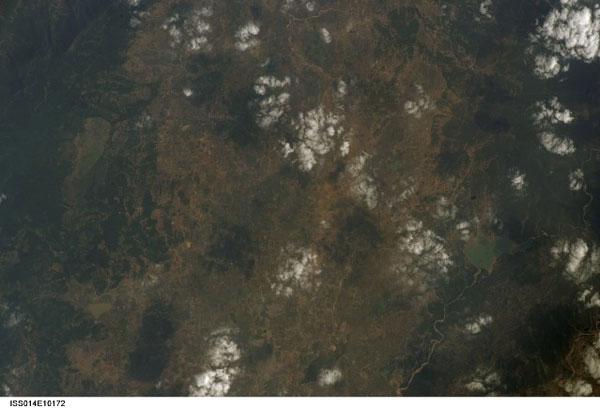
Ancient Source of Earth's Biggest Eruptions Found

Editor's note: This story was updated to reflect the correct condition of the mantle.
A half dozen of the most titanic volcanic eruptions in Earth's history — including one potentially linked with the extinction of the dinosaurs — might all stem from the same ancient reservoir of super-hot rock near the Earth's core, scientists find.
Gigantic deluges of lava known as flood basalts have been linked with mass extinctions throughout history. For instance, a series of colossal volcanic eruptions near the end of the Age of Dinosaurs between 67 million to 63 million years ago created the mammoth Deccan Traps lava beds in India, which originally may have covered as much as 580,000 square miles (1.5 million square kilometers), more than twice the area of Texas.
The origins of these catastrophic outpourings of lava are unclear. New clues began emerging last year with research into flood basalts that erupted 62 million years ago in Baffin Island (part of the Canadian Arctic) and West Greenland, which suggested they came from a part of the Earth's mantle layer — the hot, slowly flowing, but solid layer between the core and the surface crust — nearly as old as the 4.5 billion-year-old Earth itself.
"It basically survived intact since Earth's core formed," said study researcher Matthew Jackson, a geochemist at Boston University.
Since this ancient rock was seen at one flood basalt, the scientists began investigating samples from five other flood basalts, including the Ontong–Java Plateau in the south Pacific, the result of the largest volcanic event in Earth's history.
"The Ontong-Java Plateau is huge — it's the size of Alaska, and about 30 kilometers, or 20 miles, thick," Jackson said.
Sign up for the Live Science daily newsletter now
Get the world’s most fascinating discoveries delivered straight to your inbox.
The researchers discovered these six flood basalts, including the Deccan Traps, all bore geochemical signatures of this primitive reservoir about 1,800 miles (2,900 km) below the Earth's surface, near the boundary of the mantle and core.
"Imagine a lava lamp," Jackson told OurAmazingPlanet. "This primitive reservoir is very rich in radioactive heat-producing elements such as uranium, thorium and potassium. You have these super-plumes form from it that rise upward because they're hot and buoyant, just like in a lava lamp, and go on to cause melting at the crust for these flood basalts."
Jackson and colleague Richard Carlson of the Carnegie Institution of Washington detailed their findings online today (July 27) in the journal Nature.
This story was provided by OurAmazingPlanet, a sister site to LiveScience.










